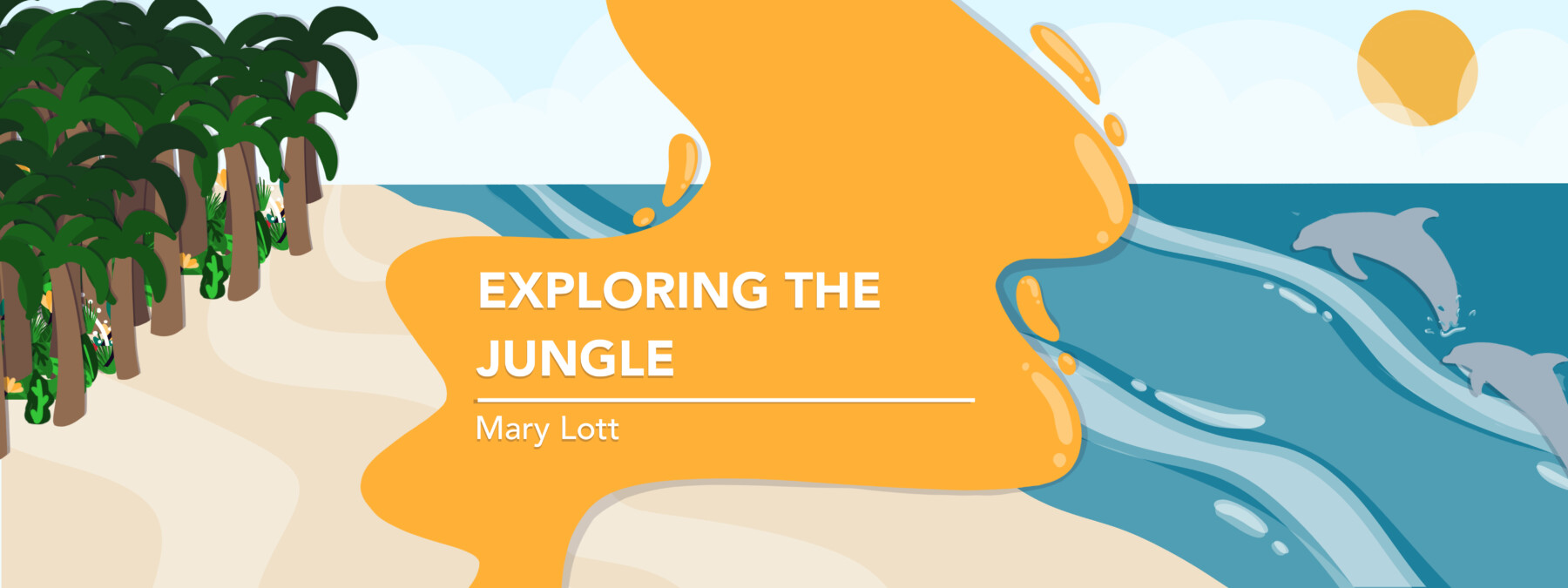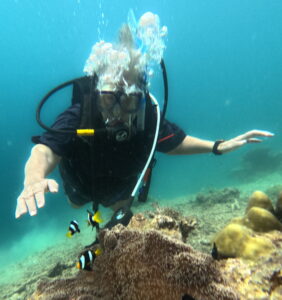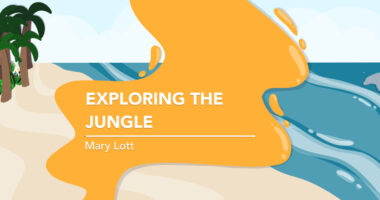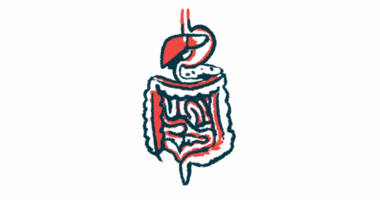Outdoor survival skills help me evaluate CAD symptoms
A columnist explains how she uses the OODA loop to monitor CAD

I looked to the right and then to the left, searching in vain for landmarks. I had no clue where we were in the water.
I was leading a group of divers and had just committed a gross and dangerous error: I had gotten us lost!
We swam on the surface west-north-west about 50 yards offshore. We oriented ourselves with our compasses and the surface landmarks we could see. The shore was behind us. Upon reaching that point, we submerged and swam around an island, and then, when we thought we had returned to the starting point, we were to begin our swim back to shore. Our plan was to swim underwater where it was smoother, allowing ourselves to slowly ascend and outgas nitrogen from our bodies as we went.
The problem for me was that nothing looked familiar, and my orienteering skills left much to be desired.
Other than having no clue how to get back to shore, the dive had been wonderful. Now it was time to swim to shore, wherever it was! I signaled to the others to move in closer and rest while I looked about for clues to determine which way to go.
How to survive CAD confusion
I felt this same confusion prior to my diagnosis of cold agglutinin disease (CAD). I was having a lot of symptoms and no real direction about how to proceed. I needed to pause, catalog what I was seeing, then determine a course toward treatment. This was the OODA loop, a survival skill, in practice.
I decided to proceed with the most obvious challenges: breathing difficulties with a cough, extreme tiredness, and inconsistent blood counts.
I’ve had a few opportunities to “primitive” camp — that is to live in the woods, make a shelter, purify water, and do some easy hiking. Not only did I try to learn how to use a compass, but I also learned the OODA loop.
OODA means to “observe” — take stock of the surroundings and see what is going on around you. The second “O” is for “orient.” The observer determines how these surroundings will affect them. This is followed by “decide,” as in decide a course of action. That leads naturally to “act.” In other words, the observation becomes an action. This is what I was doing while scuba diving. I also do this now with my CAD. I constantly follow the OODA loop process.
All summer long, I’ve had an intermittent cough. I’ve also been tired. That is an observation. Then, I orient myself and think through what might be causing those two signs. I did have a cold or other respiratory infection starting in April. Was my CAD worse or did I simply have a minor ailment?
Since I didn’t know the answer, I decided I needed to return to my doctor at East Alabama Medical Center from my home in Papua, Indonesia. I’m currently arranging that travel. This OODA loop will finish when I get on a plane and begin the process again.
Employing survival skills every day
Every day I follow a continuous cycle of observation, orientation, decisions, and then actions. As a “CADdy,” which is what we call ourselves, I must be aware of the temperature in my environment. I must orient myself to how my body will respond to a particular environment.
Sometimes I decide to change my actions because of what is happening within my body. I take a sweater with me to the grocery store. Every October, I invest in HotHands, a packet of chemicals that become warm when shaken and can keep fingers and toes warm. I keep HotHands with me always, from October to April. When my symptoms change from “possible” to “prominent,” I make an appointment with my hematologist and follow his directions.
Obviously, my dive trip ended without additional mishaps. As the group waited underwater at about 15 feet of depth, I surfaced to learn which direction we should go. Then, I submerged again, and together, we swam ashore. With CAD, I must mentally surface and observe my health from time to time. I must evaluate if I need to change something I’m doing or how I’m living. Once I decide on a course of action, I must follow through.
I observe, orient, decide, act, and repeat the process throughout my life, in many situations. That dive trip could have been a sad disaster. Instead, it developed into a colorful story. It was a lesson to me, nonetheless, that I need to be ever vigilant, both when I dive and when dealing with my health.
Note: Cold Agglutinin Disease News is strictly a news and information website about the disease. It does not provide medical advice, diagnosis, or treatment. This content is not intended to be a substitute for professional medical advice, diagnosis, or treatment. Always seek the advice of your physician or other qualified health provider with any questions you may have regarding a medical condition. Never disregard professional medical advice or delay in seeking it because of something you have read on this website. The opinions expressed in this column are not those of Cold Agglutinin Disease News or its parent company, Bionews, and are intended to spark discussion about issues pertaining to cold agglutinin disease.









Leave a comment
Fill in the required fields to post. Your email address will not be published.